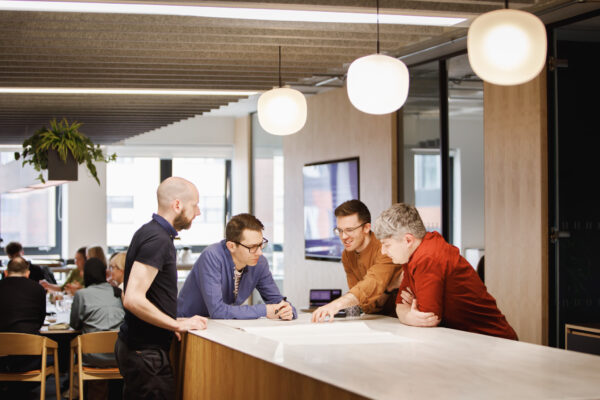Adaptive Reuse: Rethinking Riley Court
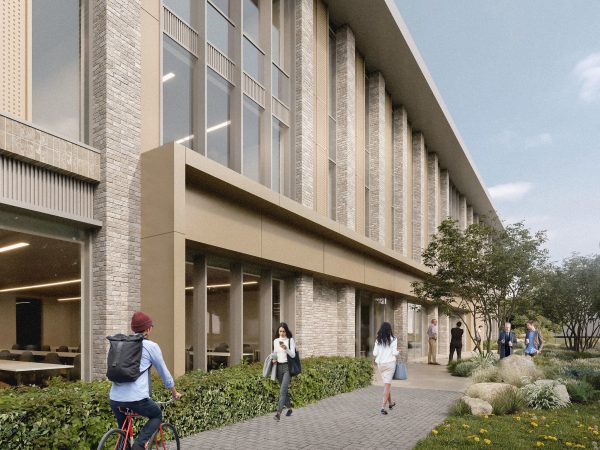
When the Department of Psychology outgrew its home in the Humanities building, the University of Warwick faced a strategic opportunity. Rather than building anew, it invested in the adaptive reuse of Riley Court – an early-2000s commercial office building acquired from the adjacent Science Park.
Through strategic design and bold retrofit strategy, this modest structure is being reconfigured into a dynamic home for one of the University’s fastest-growing academic departments—equipped for cutting-edge research, flexible teaching, and public engagement.
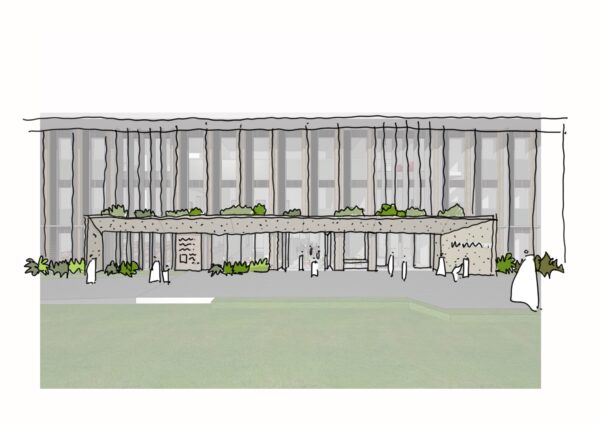
A Complex and Strategic Rework
Transforming a generic, outdated office block into a modern science building was never going to be simple – and one thing was clear from the onset of this project: the current functional capacity of the building needed a complete transformation.
Building fabric and infrastructure upgrades were needed to cater to modern research requirements and bring environmental performance up to the University’s ambitious targets; a richer variety of spaces was needed to accommodate lab activities and modern methods of teaching; and a more flexible future for the building was needed in order to respond to the evolving the needs and opportunities of the department.
However, the building didn’t just need a mechanical upgrade. It needed to establish a real sense of identity for the department, a place that doesn’t just perform for the students and staff, but gives them an intellectual home and inspires engagement – from all angles. Activating the ground floor and transforming the southern façade was going to be crucial to achieving this mission, completely redesigning the entrance experience.
The main challenge for the team was to figure out how to accommodate these upgrades all while preserving as much of the existing internal building fabric as possible.
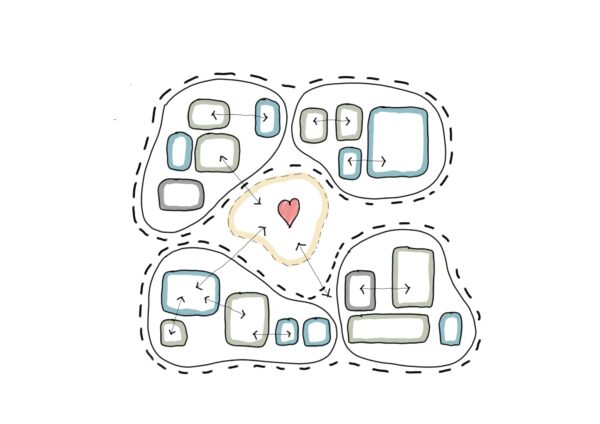
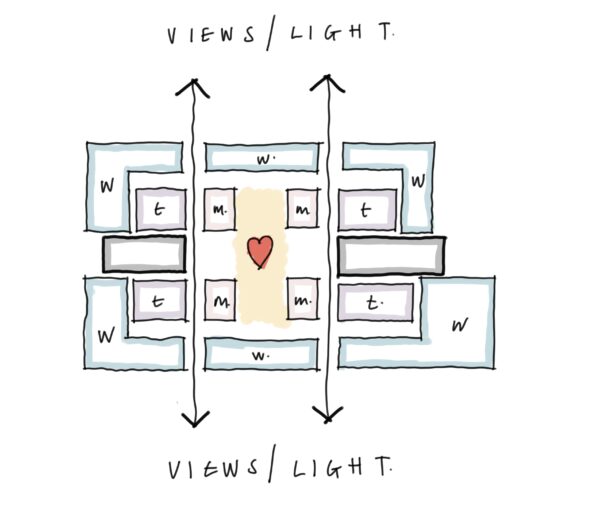
Developing the Design
Early design development focused on overcoming the building’s inherent limitations while amplifying its best features. Long, monotonous corridors were broken up to create breakout spaces that now serve as collaborative hubs, inviting informal interaction and allowing natural light to penetrate deeper into the plan.
The building’s existing strengths—such as operable windows, generous daylight, and natural ventilation—were used as starting points for mapping space typologies, ensuring that labs, write-up areas, and offices were arranged in smart, functional relationships that met the department’s diverse needs.
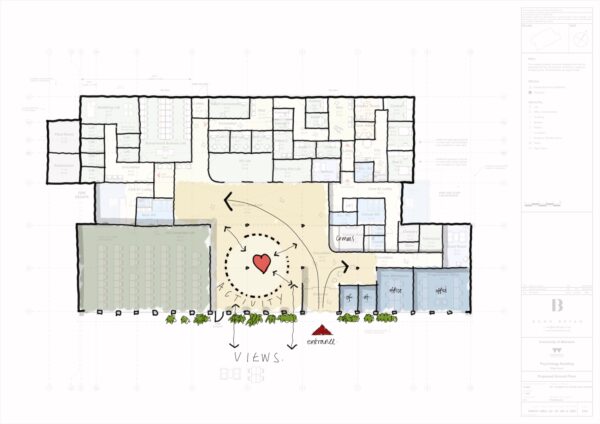
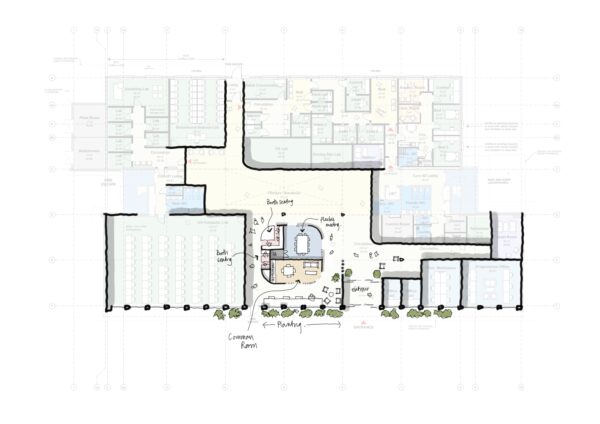
Extensive workshopping with the end-users in the faculty revealed the importance of strategically placing specialist labs to balance privacy, access, and visibility. Research spaces such as sleep study areas and baby/adult communication labs required discreet locations, some with 24-hour public access. Others, like driving simulator labs and VR labs, offered opportunities to engage passersby and occupy prominent, visible positions within the new building – an exciting and intentional change from the cellular and private space within the humanities cluster that the department previously occupied.
The creation of a new entrance opening directly on to the central atrium was equally critical in these early stages of design. This intervention would not only redefine the ground floor as an active, engaging threshold to the facility, but also provide a clear sense of identity and place for the department. The direct entry into the atrium also acts as both a critical wayfinding tool and a social heart—making the building intuitive to navigate while providing space for research exposition and fostering a sense of connection across its three levels.
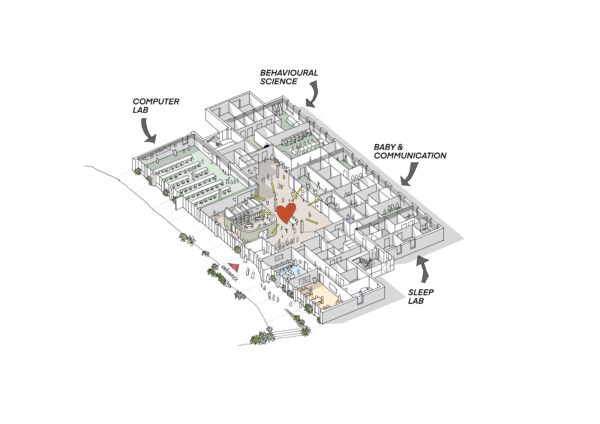
A Strategic Enabler for Campus Growth
The restructuring of the southern façade was a pivotal design move, serving both functional and strategic purposes.
Relocating the main entrance from its awkward, side-facing position resolved disjointed pedestrian movement and created a more accessible, navigable focal point on the Academic Loop Road. This new central approach is reinforced by a landscaped green link, establishing a clear, welcoming entry sequence and improving the building’s integration with the surrounding campus.
As part of the design process, our team engaged with stakeholders for the adjacent undeveloped plots to ensure the landscape strategy would not only serve Riley Court, but also facilitate the development of these neighbouring sites. In doing so, the project has laid the groundwork for a cohesive roadmap for placemaking at the north end of the Academic Loop Road.
Together, the green link, relocated entrance, and restructured façade have established a clear sense of place and identity within the University’s public realm—anchoring the Department of Psychology and enabling wider development within Warwick’s evolving STEM landscape.

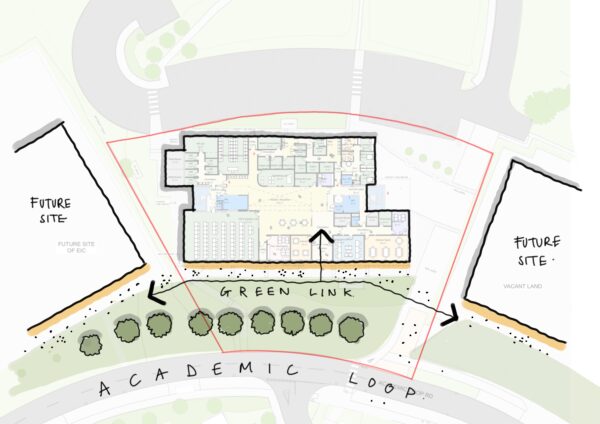
Reusing, Reducing, and Designing Circular
From early design stages, the team established four key principles to guide the retrofit strategy: fabric first, passive design, reuse, and design for deconstruction.
Fabric upgrades included internal wall insulation, high-performance glazing and carefully integrated shading, all working towards the University’s ambitious performance target of 0.15 W/m2K for all retained fabric. Ventilation was addressed through a hybrid strategy that combined mechanical and natural systems. The sheer quantity of small, ‘landlocked’ lab spaces within the plan meant these rooms required mechanical ventilation, while breakout spaces along the north and south elevations were prioritised for natural ventilation.
This approach not only improved indoor air quality but also helped drive fresh air into the atrium and circulation zones. Strategically avoiding offices running the full length of the elevations ensured that daylight and fresh air could penetrate deeper into the building—further enhancing comfort and reducing reliance on mechanical systems.
Extensive modelling by the MEP team played a crucial role in validating these strategies, ensuring that each ventilation mode performed effectively within its respective zone and that the building as a whole achieved an optimal balance of energy efficiency and user comfort.
The design approach also inherently achieved large embodied carbon savings through the retention and reuse of core elements of the structure, including the foundations, floor slabs, and structural openings. Embodied carbon was also reduced through the reuse of existing raised access flooring, below-ground services, and the atrium balustrades. By retaining these components, the project achieved substantial embodied carbon savings without compromising on performance.
Circularity was considered throughout the design process and circular economy principles were embedded through the reuse of salvaged materials from a nearby University materials store. Eligible items were selected, audited, and incorporated into the cost plan – turning surplus into resource and ensuring these materials found a meaningful second life in a high-quality teaching and research environment. The availability of these materials in close proximity to the site further reduced emissions from transportation. Transport related emissions were also considered during the specification process where local suppliers were prioritised to minimise on long-distance imports, and to strengthen the regional supply chain.
Circularity was further embedded within the design process where the contractor and consultant team collaborated to design junctions and interfaces that were efficient, adaptable, and designed for future disassembly or modification—maximising the building’s long-term resilience.
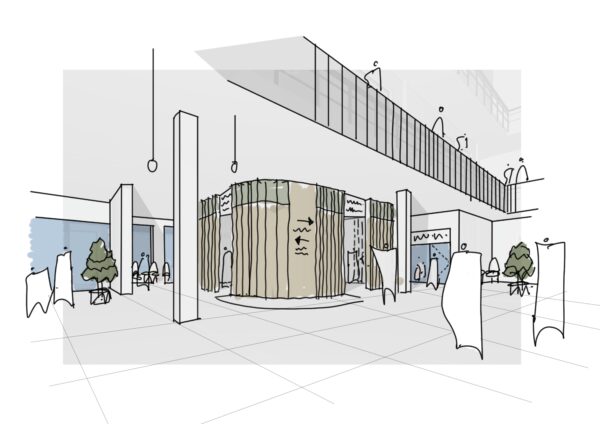
Ready for the Future
A comprehensive metering and monitoring system enables the building to operate intelligently and transparently. Distribution boards, lab groups, and plants are metered, enabling facilities teams to monitor and compare energy loads across floors and space types. Lighting and water use are similarly tracked, with PIR controls and flow restrictors limiting waste, and leak detection systems safeguarding performance.
This system does more than inform operations – it future-proofs the building. With detailed usage data and a low-temperature heat network in place, the building is primed for connection to future low-carbon heating systems – anticipating tomorrow’s opportunities.
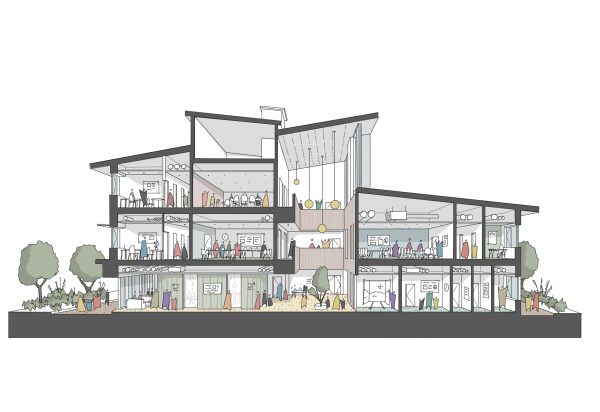
Riley Court is a powerful example of what modern retrofit can achieve. Through purposeful reworking, smart decisions, and a strong collaborative ethos, the building is being transformed – both physically and strategically – into a sustainable, high-performance academic home for the future of psychology at Warwick.
Illustrations by Dale Hickman
